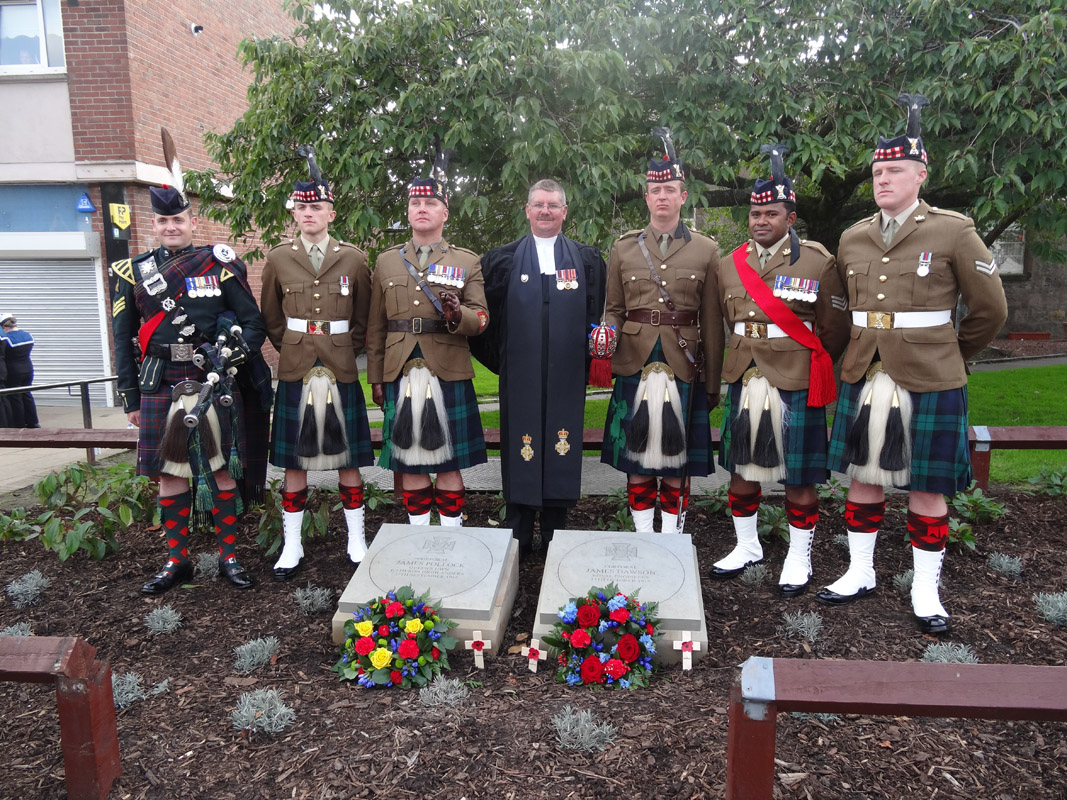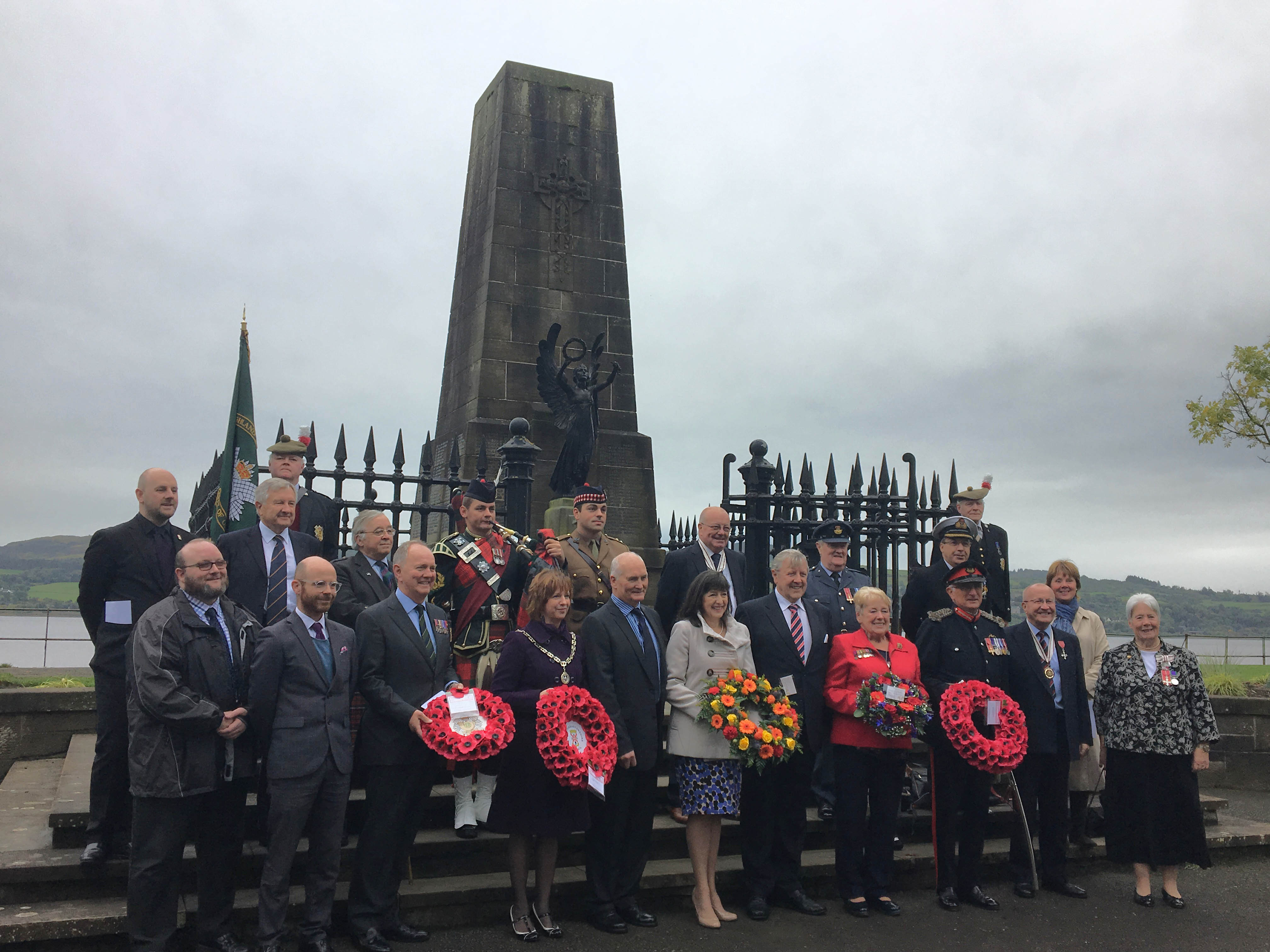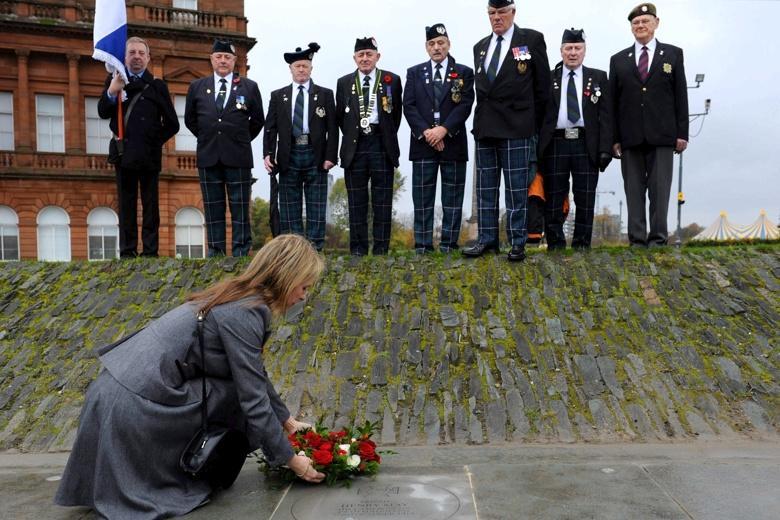Victoria Crosses
Corpl. James Lennox Dawson VC, 187th Company Royal Engineers; RTC 1912; GPTC 1909-13; GURH; cremated Eastbourne Crematorium, Sussex; For Valour memorial Royal Engineers Museum, Chatham, Kent; VC commemorative paving stone Bank Street, Tillicoultry; VC Hunterian Museum, Glasgow.

James Lennox Dawson, from Alloa, was a student on the General Certificate course at the Glasgow Provincial Training College from 1909 to 1913. He duly qualified to teach primary school subjects, and was recognised by the Education Department as a Certificated Teacher from 1913, being bound to complete a period of five years’ service in schools. Whilst completing his last year of teacher training, he was simultaneously an evening student in Organic Chemistry at the Royal Technical College.
For most conspicuous bravery and devotion to duty on October 13, 1915, at Hohenzollern Redoubt. During a gas attack, when the trenches were full of men, he walked backwards and forwards along the parados, fully exposed to a very heavy fire, in order to be the better able to give directions to his own sappers, and to clear the infantry out of the sections of the trench that were full of gas. Finding three leaking gas cylinders, he rolled them some 16 yards away from the trench, again under very heavy fire, and then fired rifle bullets into them to let the gas escape. There is no doubt that the cool galantry of Corporal Dawson on this occasion saved many men from being gassed.
Private John Brown Hamilton VC, 9th (Glasgow Highlanders) Highland Light Infantry; RTC 1915; cremated Daldowie Crematorium, Glasgow; VC commemorative paving stone Dumbarton War Memorial; VC National War Museum of Scotland, Edinburgh Castle

John Brown Hamilton was an electrician from Cambuslang who was an evening student at the Royal Technical College in session 1914-15, taking the class Electrical Engineering I.
For most conspicuous bravery and devotion to duty during the enemy's attack on the line held by our brigades. The greatest difficulty was experienced in keeping the front and support lines supplied with small-arm ammunition, owing to the intense and continuous belt of artillery fire placed systematically by the enemy between our various lines and battalion headquarters. It was of vital importance for the successful maintenance of the defence of the position that ammunition should be got forward. At a time when this ammunition supply had reached a seriously low ebb, L.-Corpl. Hamilton on several occasions, on his own initiative, carried bandoliers of ammunition through the enemy's belts of fire to the front and support lines, and then, passing along these lines in full view of the enemy's snipers and machine guns - who were lying out in front of our line at close range - distributed the ammunition to the men. In so doing he not only ensured the steady continuance of the defence by rifle fire, but by his splendid example of fearlessness and devotion to duty inspired all who saw him with fresh confidence, and renewed their determination to hold on at all costs. [on 25-26 September, 1917, north of the Ypres-Menin Road]
Private Henry May VC, 1st Scottish Rifles; RTC 1912; buried Riddrie Park Cemetery, Glasgow; VC pavement memorial Bridgeton Cross, Glasgow; VC commemorative paving stone The People's Palace, Glasgow; VC Cameronians (Scottish Rifles) Regimental Museum, Hamilton, Lanarkshire

Henry May was a tenter from Calton who was an evening student in the Department of Textile Manufacture at the Royal Technical College in 1909-10, 1910-11 and 1912-13. In each session he took Weaving and Weaving Practical classes, for each and every one of which he gained a first-class certificate of merit.
For most conspicuous bravery near La Boutillerie, on the 22nd October, 1914, in voluntarily endeavouring to rescue, under very heavy fire, a wounded man who was killed before he could save him; and subsequently, on the same day, in carrying a wounded officer a distance of three hundred yards into safety while exposed to very severe fire.
Other awards
The RTC Roll of Honour includes 606 other honours:
- KBE
- CMG
- 21 DSO
- 7 OBE
- 5 MBE
- 24 DSC and bars
- 204 MC and bars
- 2 AFC
- 3 DSM
- 18 DCM
- 43 MM and bars
- 7 Meritorious Service Medal
- RRC
- Albert Medal
- BEM
- 209 Mentioned in Despatches
- 4 Commended for Valuable Service, besides recognitions from the Governments of:
- France (22)
- Belgium (11)
- Italy (5)
- Russia (4)
- Serbia (5)
- Romania
- Greece
- Montenegro
- Portugal
- Egypt
- Tunis
The GPTC Roll of Honour includes:
- 25 Military Crosses
- three Distinguished Conduct Medals
- six Military Medals and bar
- one French Croix de Guerre
- two Belgian Croix de Guerre